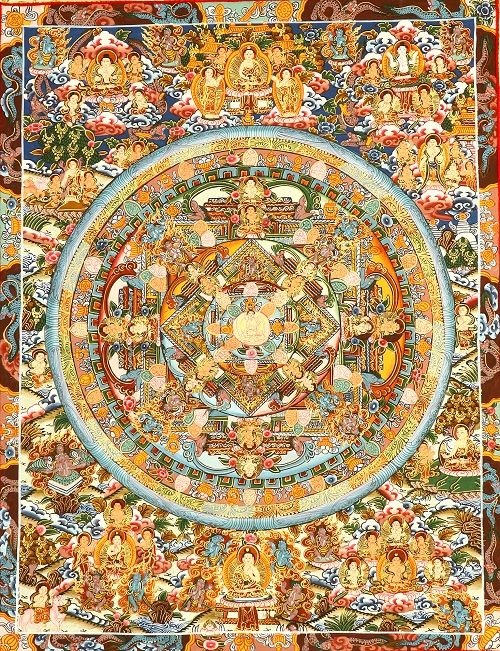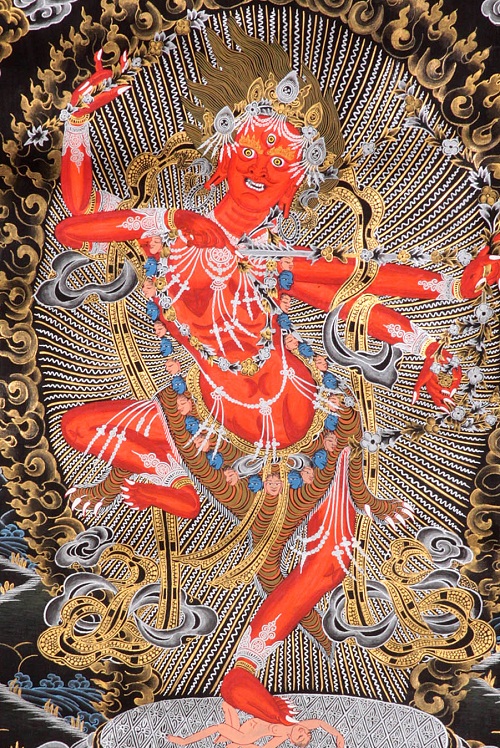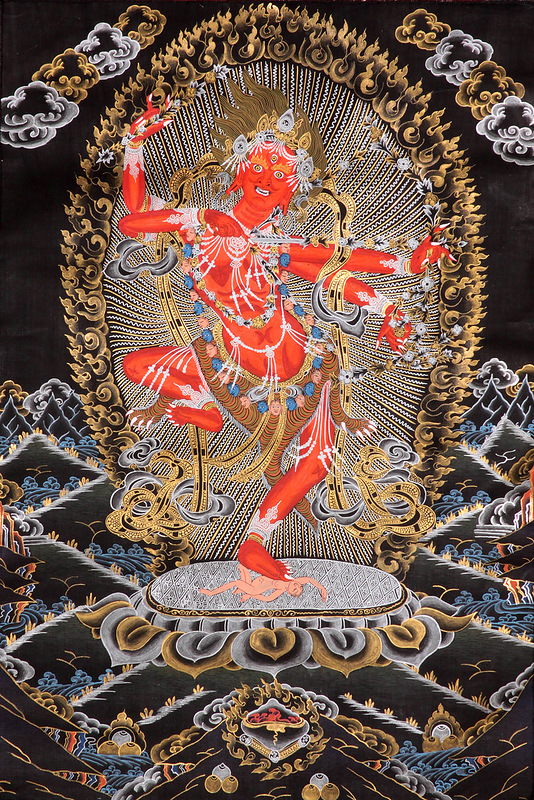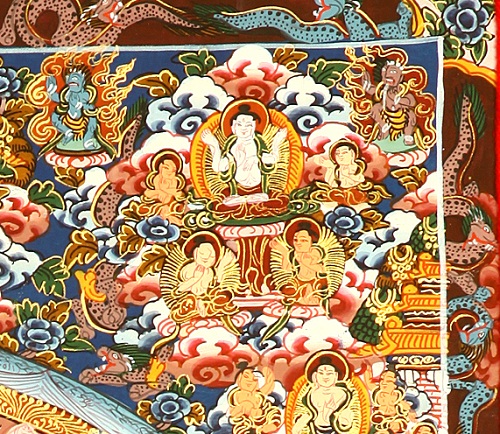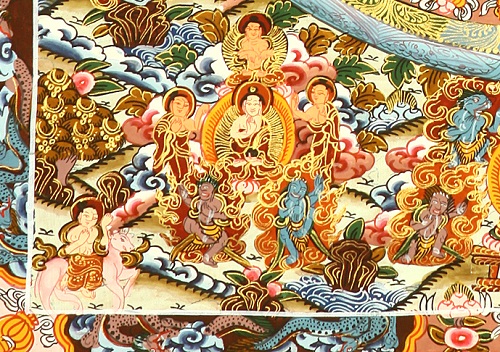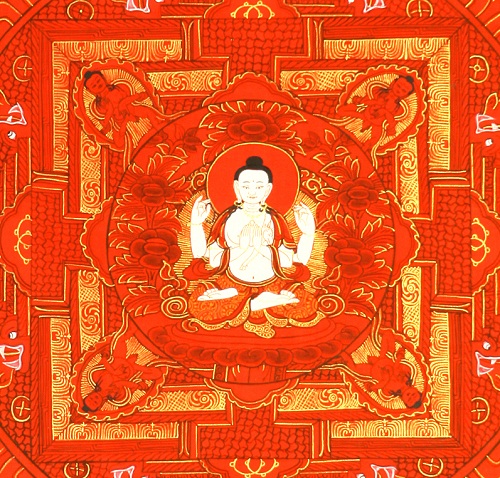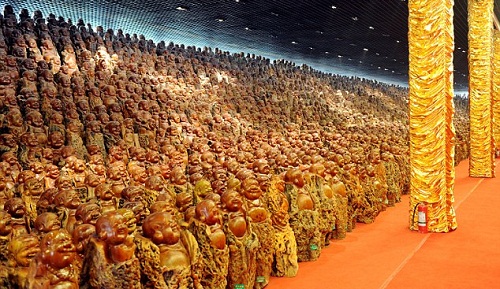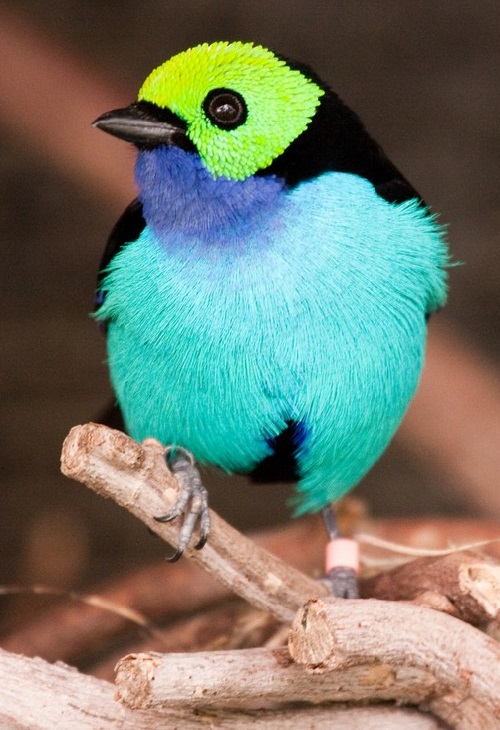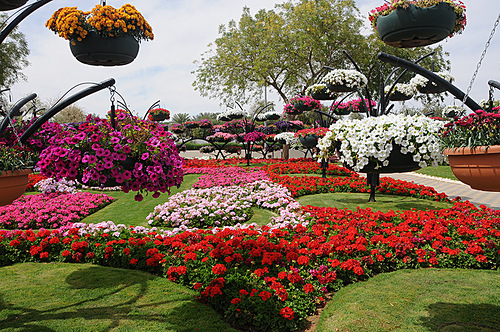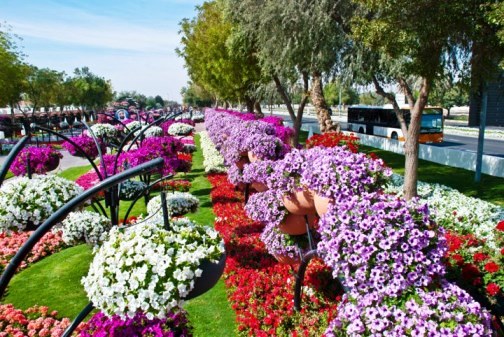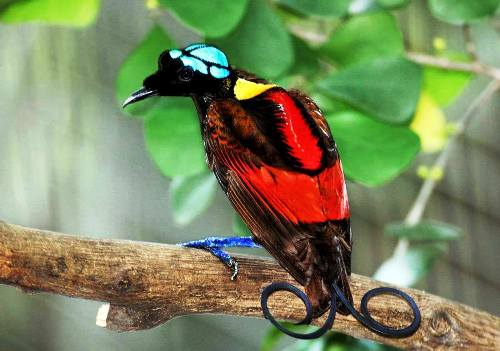Paradise of the Medicine Buddha. Thangka Gallery
The “paradise of the Medicine Buddha”
First depicted in 1687 by Desi Sangye Gyamtso, the regent of the Fifth Dalai Lama, it illustrated the origins and practices of Tibetan medical science. Seated in the center of a celestial paradise is the Buddha in the form of Bhaishajyaguru, “master of remedies.” Surrounding him are numerous gods, sages, and other exalted beings, some of whom are described as sleeping at night under blankets of leaves and wearing only the barks of trees by day. This paradise represents an idealized universe where remedies exist for every ailment. The Buddha himself is said to have stated, “For as many sentient beings as exist in this world system, there is a path to liberation.”
This is a reaffirmation of the Buddhist ideal where a spiritual path is available for all, according to his or her own individual need.
In Buddhist tradition the first and primordial healer was the great Buddha himself. Known popularly as the Medicine Buddha he is said to have revealed the teachings embodied in the sacred bodies of texts known as the Four Medical Tantras.
Outside the jeweled walls of the palace are the fragrant and healing plants of the Tibetan pharmacopoeia. In the upper left, men and women bathe in medicinal springs emanating from stylized rock formations. At the top are snow mountains; on all sides are innumerable varieties of medicinal plants.
Paradise of the Medicine Buddha

The Six-Armed (Shadbhuja) Mahakala (mGon po phyag drug pa) – A Highly Symbolic Image. Thangka Gallery
exoticindia.com

